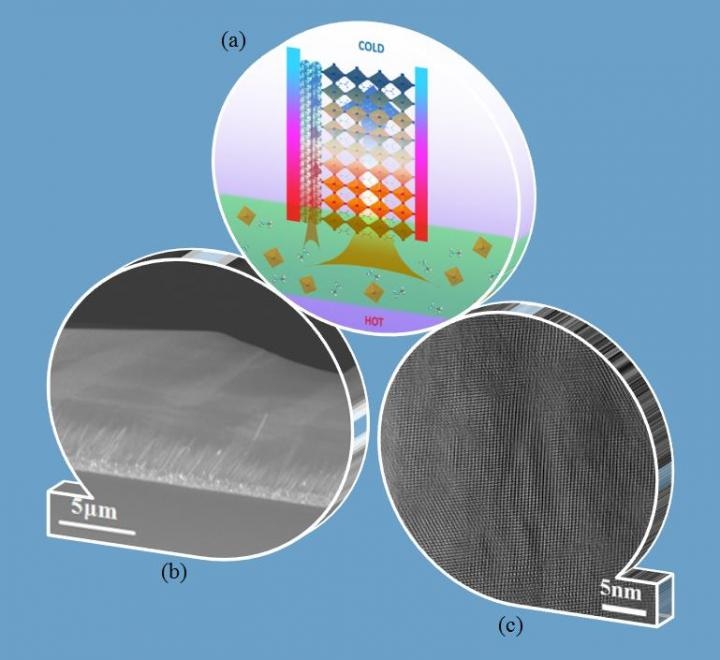Aug 29 2017
Photovoltaic conversion is considered to be the ultimate solution to mankind's constant growing demand for energy, yet the standard silicon-based solar cells are expensive to produce, and the production itself involves intensive energy consumption.
On the other hand, the emerging hybrid organic-inorganic solar cells based on perovskite CH3NH3PbI3 are cost-effective to process and are also flexible, thus being extensively pursued as one of the most preferred next generation photovoltaic conversion technologies. Since its initial report in 2009, the photovoltaic conversion efficiency of perovskite solar cells has increased spectacularly from 3.81% to 22.1% within seven years, and such an extraordinary rise has indeed fueled worldwide pursuit for its efficiency record. However, over the past two years, the stride in perovskite solar cell efficiency increase has dropped down to a major extent even though it is still a long way from the projected theoretical limit of 31%. Researchers are thus exploring new strategies to further improve the performance of the perovskite solar cell.
 Single crystalline CH3NH3PbI3 self-grown on FTO/TiO2 substrate. (a) Schematic self-growth via temperature gradient and capillary effect; (b) cross-sectional SEM image of CH3NH3PbI3 on FTO/TiO2; (c) high resolution TEM image of single crystalline CH3NH3PbI3. (CREDIT ©Science China Press)
Single crystalline CH3NH3PbI3 self-grown on FTO/TiO2 substrate. (a) Schematic self-growth via temperature gradient and capillary effect; (b) cross-sectional SEM image of CH3NH3PbI3 on FTO/TiO2; (c) high resolution TEM image of single crystalline CH3NH3PbI3. (CREDIT ©Science China Press)
The existing perovskite solar cells are based on polycrystalline CH3NH3PbI3 films, and hence have a number of defects in grain boundaries and grains that in turn affect the performance of the device. Efforts have been carried out to develop bulk CH3NH3PbI3 crystals capable of exhibiting excellent photovoltaic properties such as long lifetime of photo-generated charge carriers and diffusion length, even though the incorporation of bulk crystal into perovskite solar cell device architecture proved to be relatively challenging. Currently, single crystalline film of CH3NH3PbI3 has been successfully grown on electron-collecting FTO/TiO2 substrate by a team of Chinese and US scientists from Shenzhen Institute of Technology, Shijiazhuang Tiedao University, Peking University, Argonne National Laboratory, Institute of Metal Research, and University of Washington, headed by Profs. Jiangyu Li and Jinjin Zhao. This team took advantage of capillary effect and temperature gradient during the growth process, helping them to create a high quality single crystalline film firmly incorporated on FTO/TiO2. This is treated to be critical, since FTO/TiO2 is considered to be the most extensively used electron-collecting substrate for perovskite solar cells, making the succeeding device fabrication straightforward.
The single crystalline CH3NH3PbI3 film thus exhibits exceptional photovoltaic properties. The time-resolved photoluminescence, measured directly on FTO glass substrate with poor electron extraction, exhibits a much extended carrier lifetime in single crystalline CH3NH3PbI3 film compared to the polycrystalline one. The charge carrier lifetime drops considerably when a TiO2 electron collecting layer is added on top of FTO glass, thanks to the effective electron extraction at the TiO2/perovskite interface. The device this exhibits photovoltaic conversion efficiency of 8.78%, considered to the highest reported to date for a single crystalline perovskite solar cell. The team highlighted that the system is capable of being further improved, and with constant optimization of devices and materials, they assume that the single crystalline perovskite solar cells will compete with their polycrystalline counterparts in the predictable future.